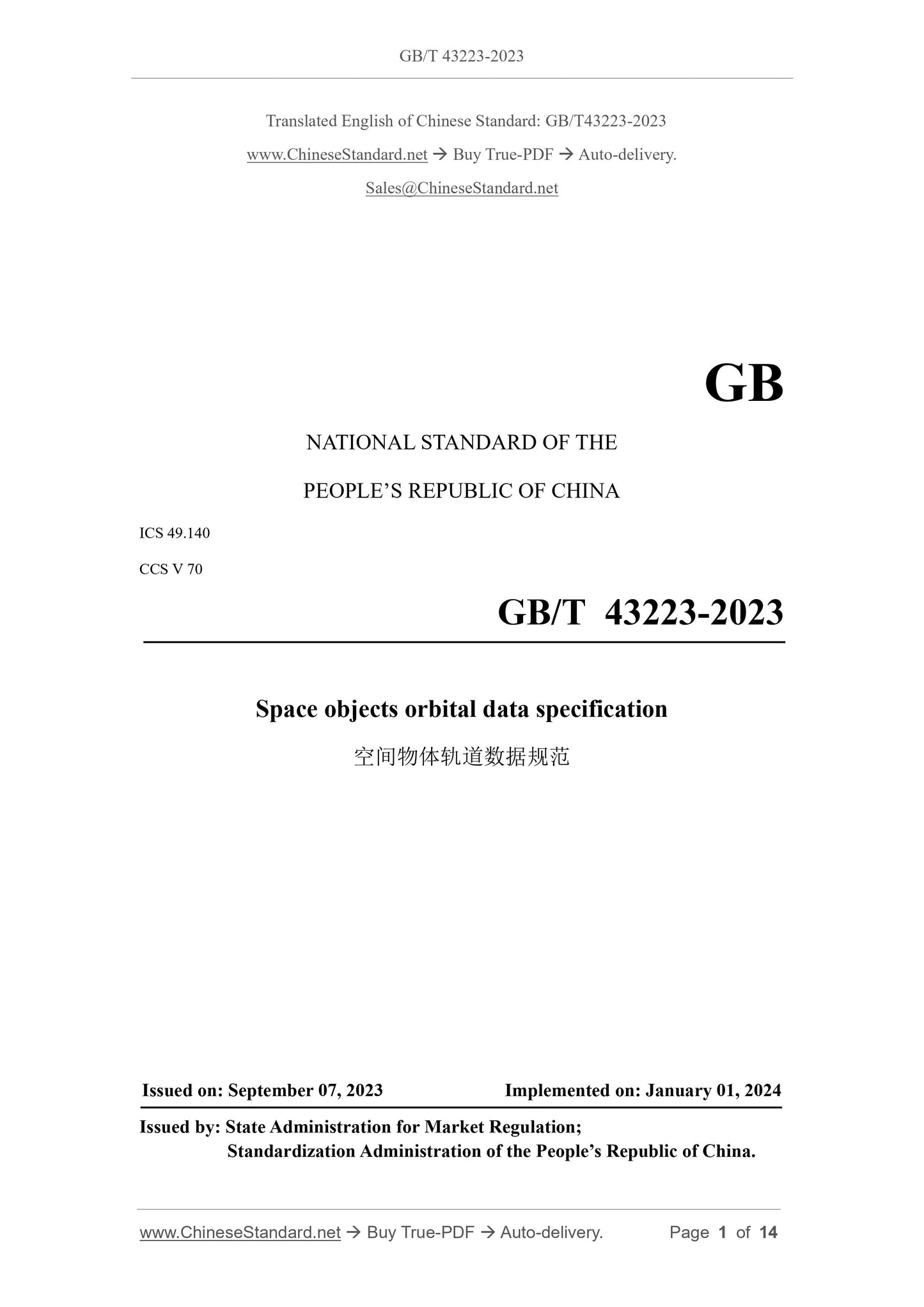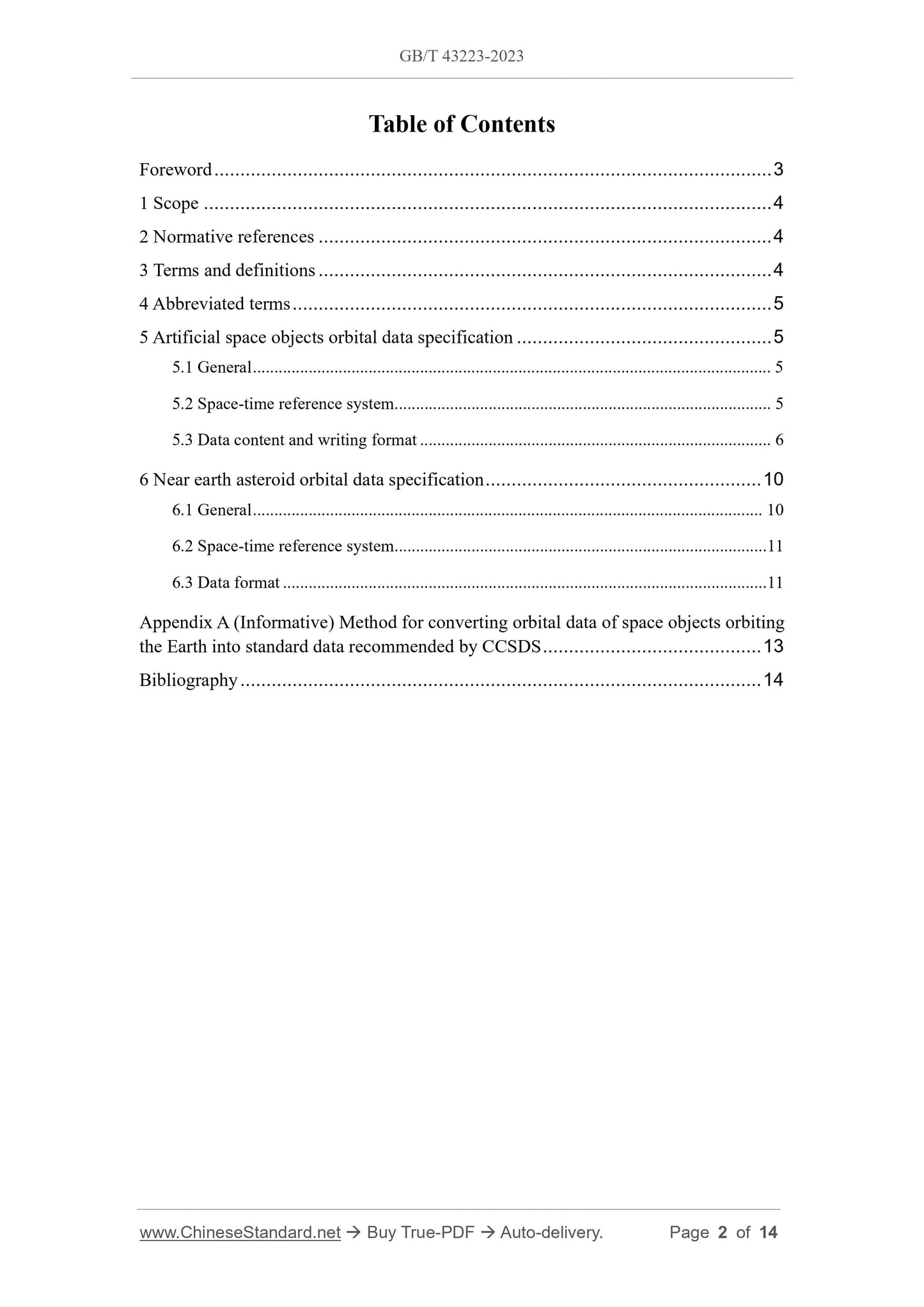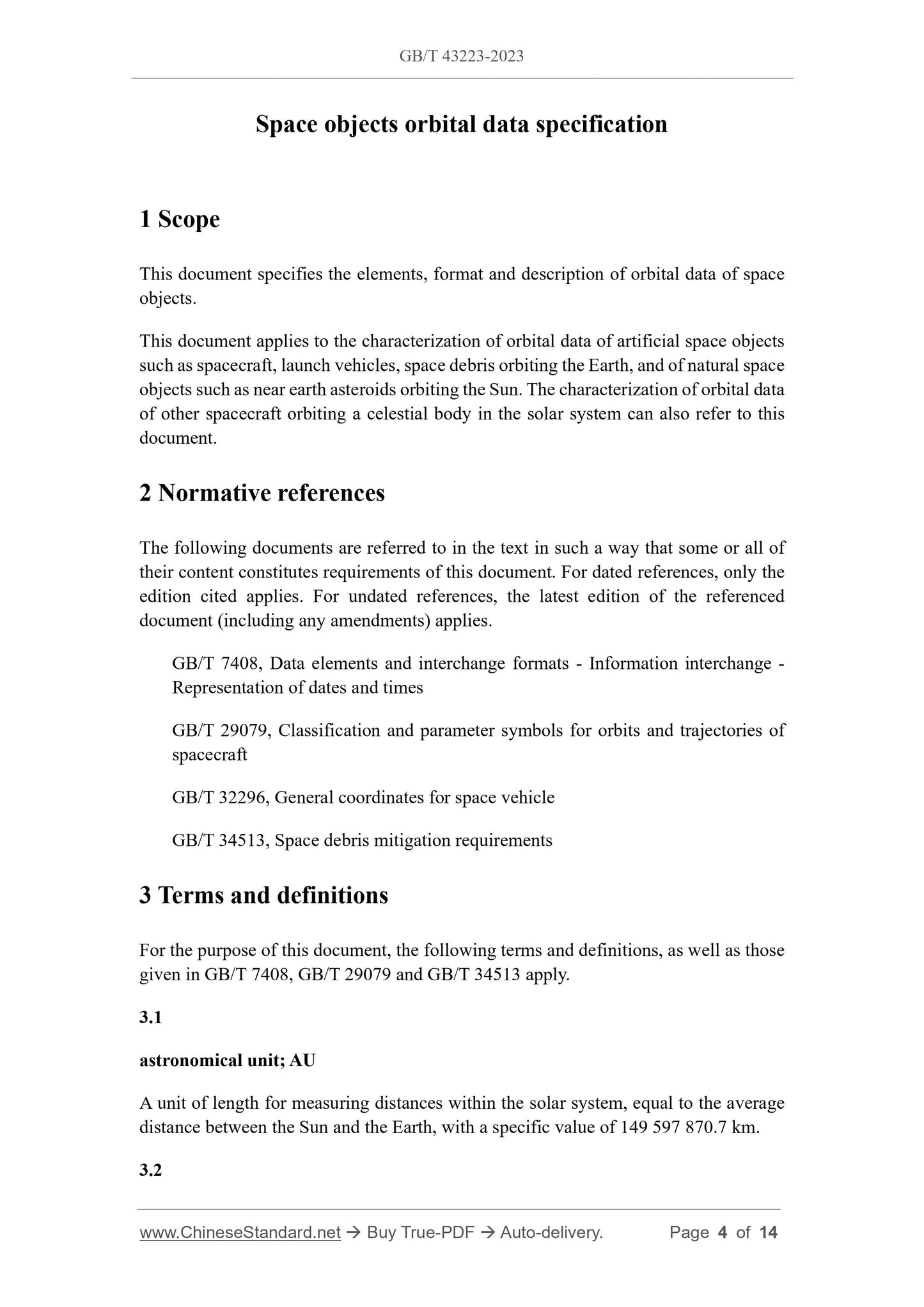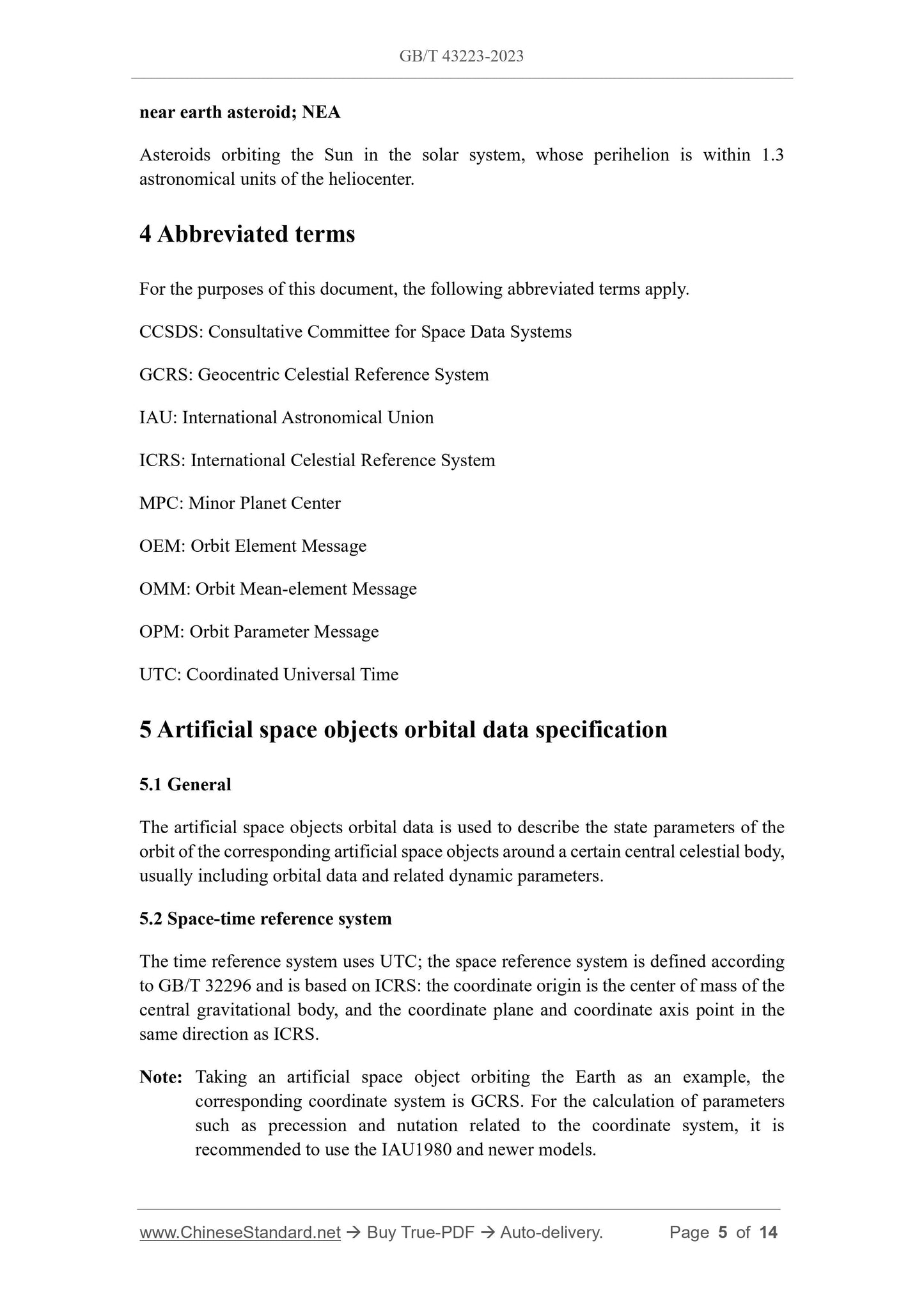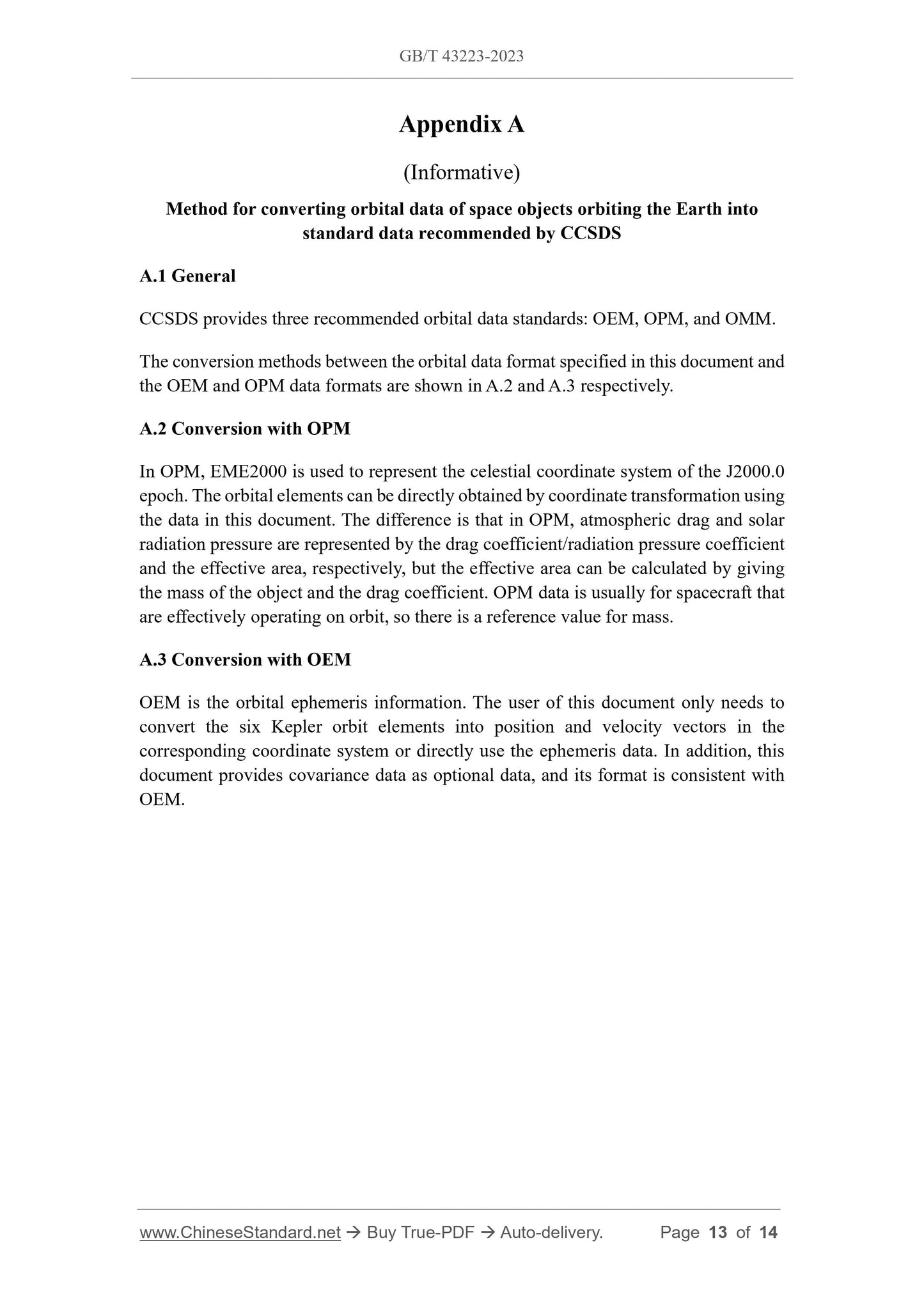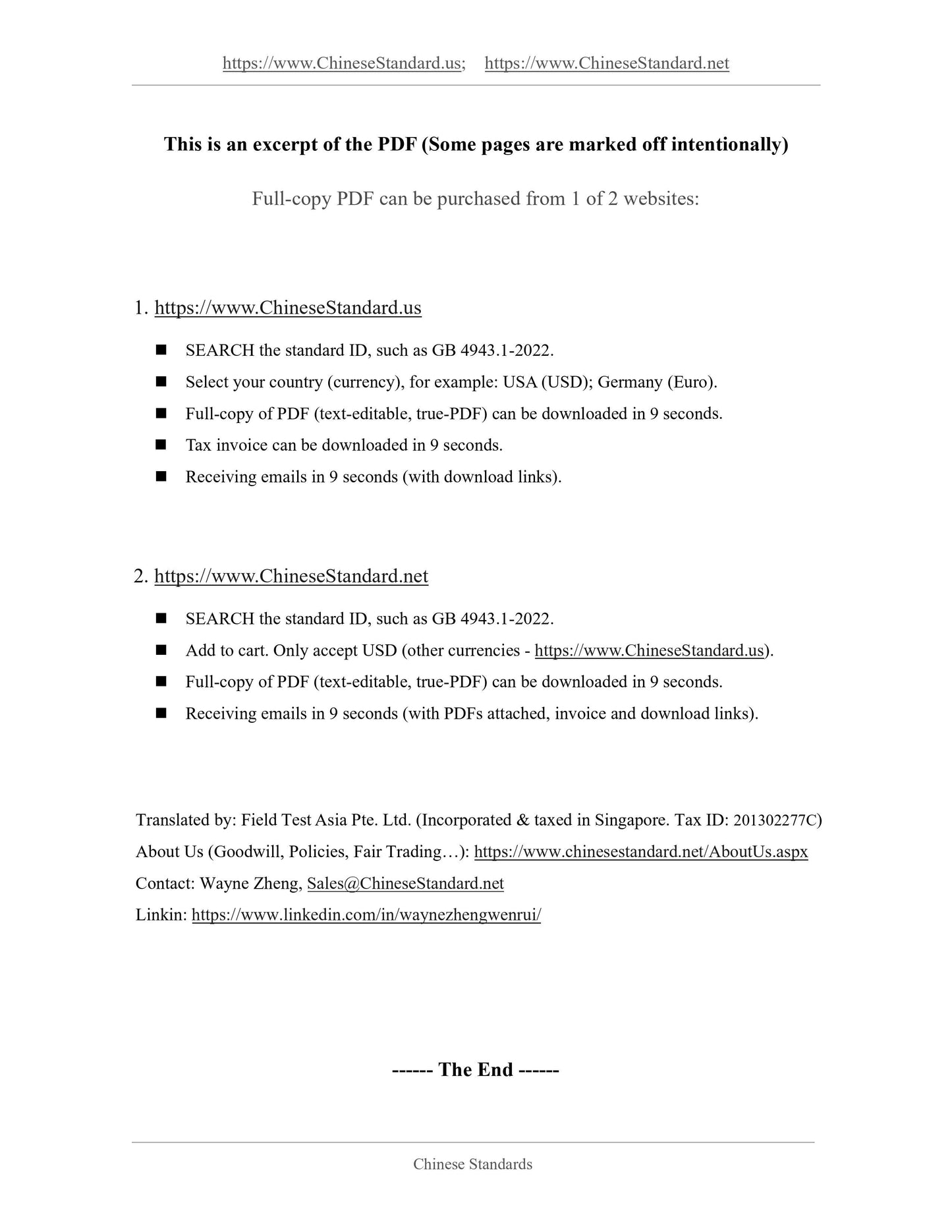1
/
of
6
www.ChineseStandard.us -- Field Test Asia Pte. Ltd.
GB/T 43223-2023 English PDF (GB/T43223-2023)
GB/T 43223-2023 English PDF (GB/T43223-2023)
Regular price
$245.00
Regular price
Sale price
$245.00
Unit price
/
per
Shipping calculated at checkout.
Couldn't load pickup availability
GB/T 43223-2023: Space objects orbital data specification
Delivery: 9 seconds. Download (and Email) true-PDF + Invoice.Get Quotation: Click GB/T 43223-2023 (Self-service in 1-minute)
Newer / historical versions: GB/T 43223-2023
Preview True-PDF
Scope
This document specifies the elements, format and description of orbital data of spaceobjects.
This document applies to the characterization of orbital data of artificial space objects
such as spacecraft, launch vehicles, space debris orbiting the Earth, and of natural space
objects such as near earth asteroids orbiting the Sun. The characterization of orbital data
of other spacecraft orbiting a celestial body in the solar system can also refer to this
document.
Basic Data
| Standard ID | GB/T 43223-2023 (GB/T43223-2023) |
| Description (Translated English) | Space objects orbital data specification |
| Sector / Industry | National Standard (Recommended) |
| Classification of Chinese Standard | V70 |
| Classification of International Standard | 49.140 |
| Word Count Estimation | 14,168 |
| Date of Issue | 2023-09-07 |
| Date of Implementation | 2024-01-01 |
| Issuing agency(ies) | State Administration for Market Regulation, China National Standardization Administration |
Share
